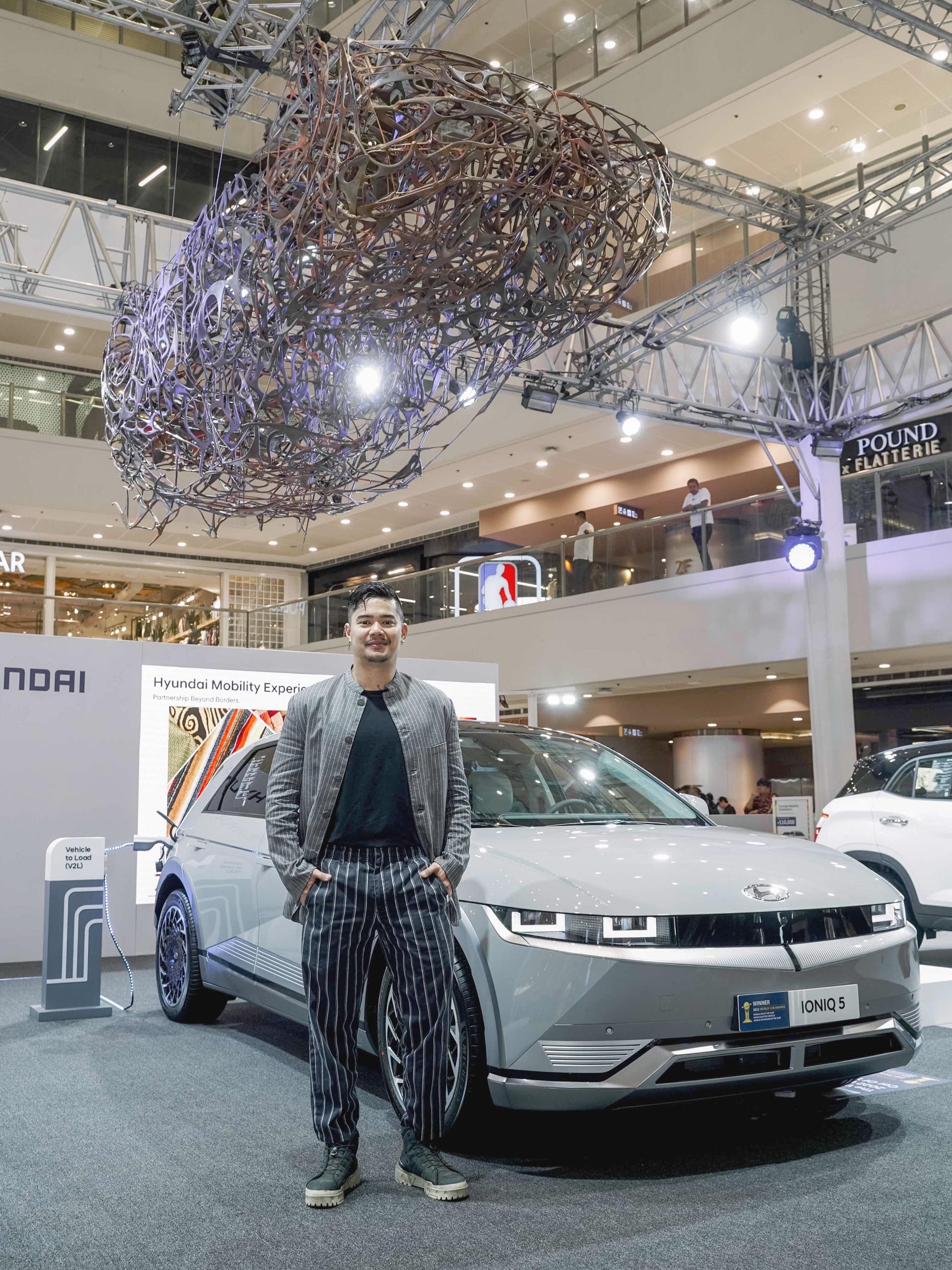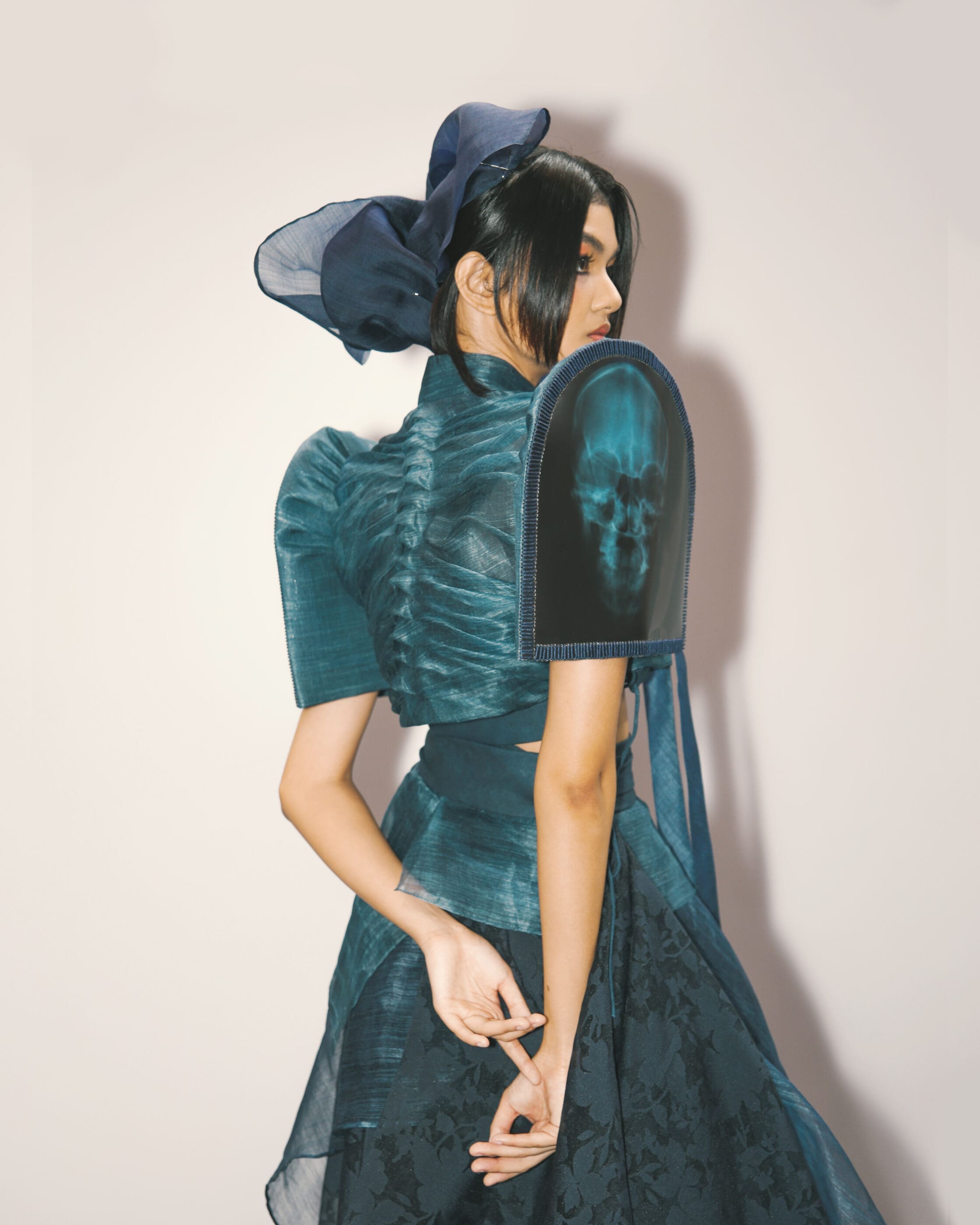Photographed by Karlo Torio
The event saw four Filipino designers showcase their creativity for the 75th Anniversary between the two nations
The year 2024 marks the 75th anniversary between the Philippines and the Republic of Korea’s diplomatic relations. In commemoration of this Diamond Jubilee year, the two nations have unveiled a series of events that pay tribute to this long standing partnership, marked by a series of initiatives that honor each of their cultures. Celebrating this milestone, Hyundai Motor Philippines paid homage to the decades of history between the two countries through an event that sought to promote facets of art, fashion, and design.
Held within SM Megamall’s fashion hall, the event began with a performance that showcased each nation’s folk music, with performers being donned in traditional attire that represented their respective cultures. For example, one set of performers were dressed in hanbok, which is characterized by long and straight silhouettes that flow in a bell-like shape, accompanied by bright colors and floral motifs. The second pair was enveloped in the robust and deep-set fabrics of the Philippines’ ethnic clothing, accompanied by headwear that matched the geometrical patterns found in their attire.
In celebration of culture and art, Hyundai also unveiled a short fashion show featuring four local designers, with the theme of mending Korean visual elements into Filipino traditional designs.

As the lights began to dim and the first ensemble began walking through the makeshift runway, a silhouette dressed in varying shades of blue began weaving in between Hyundai’s vehicles that stood as bastions throughout the space. The first look was designed by fashion designer Glyn Alley Magtibay, who has been enamored by the beauty of X-rays which have become a recurring motif in her work. For the look she created, she interweaved three main elements: X-ray films, the hanbok, and the terno, respectively.
Ilocos-based designer Amor Albana followed with a silhouette of her own, taking a more vibrant and colorful approach to her design. Taking inspiration from pastillas wrappers (a type of Filipino milk candy), the attire was colored in a shade of blue, followed by an organza fabric layered across the dress in hues of purple, violet, and pink, resulting in an ombre effect. This palette complemented the hand sewn flowers that are featured throughout the terno, which is meant to pay homage to the Korean cherry blossoms that scarcely bloom every year.
The third ensemble that walked through the walls of the fashion wall was defined by its geometric patterns, with a number of visible straight lines running through each garment. These colorful and handwoven clothes call back to the Yakans, who are indigenous inhabitants of the island province of Basilan in Sulu, an area located in the southern regions of the Philippines. Veteran fashion designer Glady Rose Pantua sought to use the clothing inspired from her own region of Zamboanga for this event, while also handcrafting a goreum (strings, or ribbons that fasten clothes together) in the same patterns that define her work.

The last designer in the event’s fashion showcase was Leeroy New, who has developed an extensive background as a sculptor, street artist, and fashion designer. The final look was featured as part of a wearable art series, which appeared to be abstract and free-flowing as compared to the other structured garments featured throughout the show. However, the highlight of this presentation was the life-sized sculpture that Leeroy had created, which was a one-to-one recreation of the Hyundai IONIQ using a variety of sustainable materials.
“The car is made almost entirely out of reconstituted sawdust, and a recycled metal frame, each sprouting in a variety of different directions that look like roots. They wrap in and around the car, essentially using free materials to turn it into a wood-looking structure.”
Apart from its artistic purposes, the installation was also meant to symbolize the future that Hyundai Motor Philippines looks toward, as it celebrates the Philippines and South Korea’s 75th anniversary together. This involves a reimagining of sustainability through vehicles, with the hopes of one day being able to create future-forward automobiles with renewable energy and materials in mind.

For more information, visit their official website.
